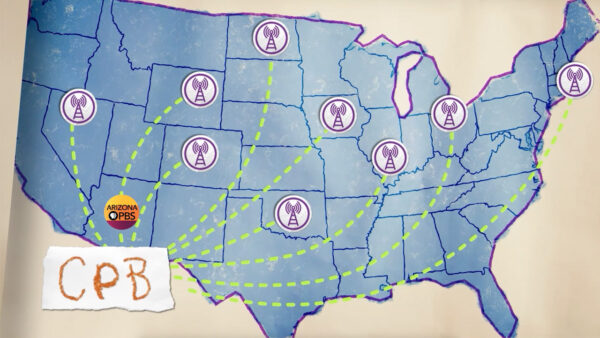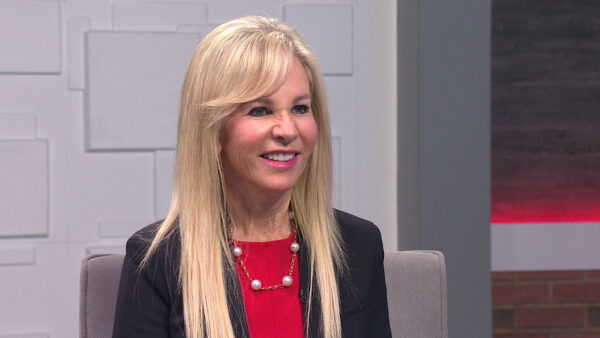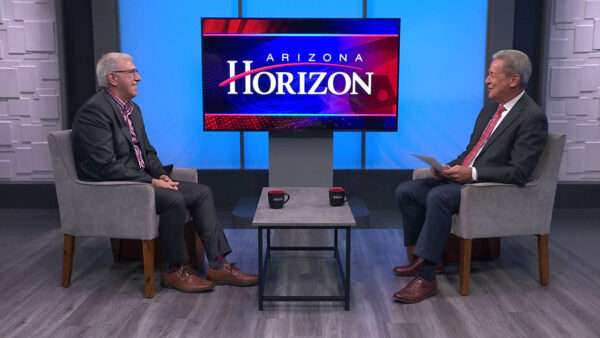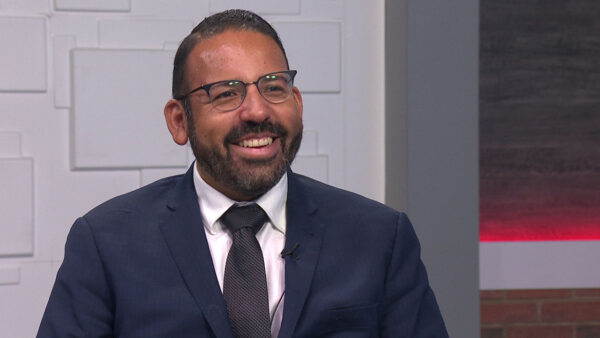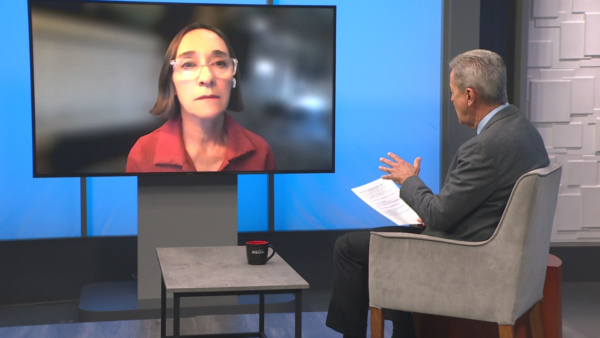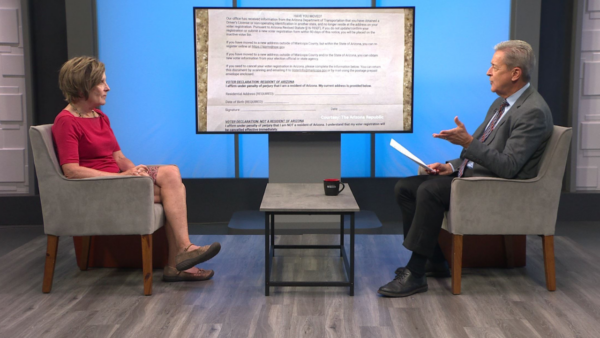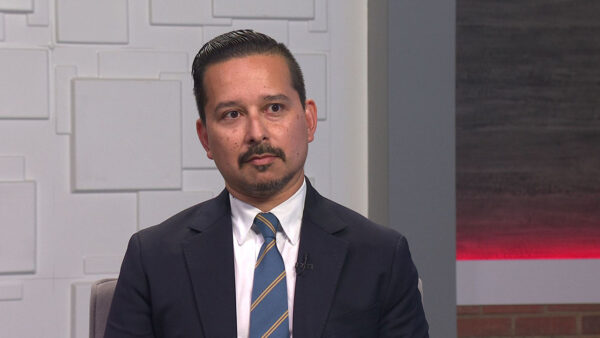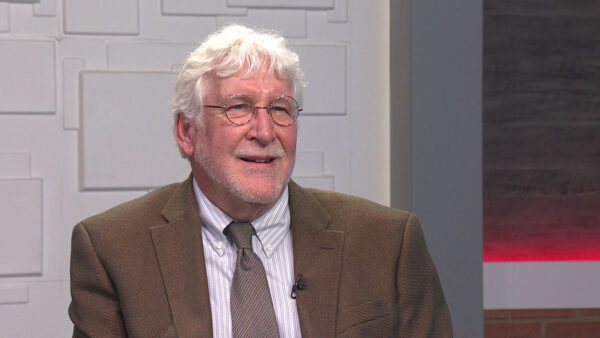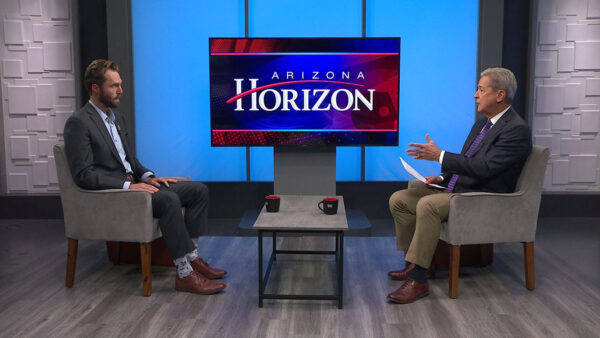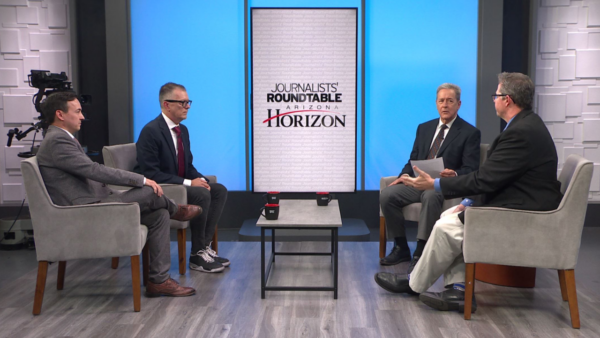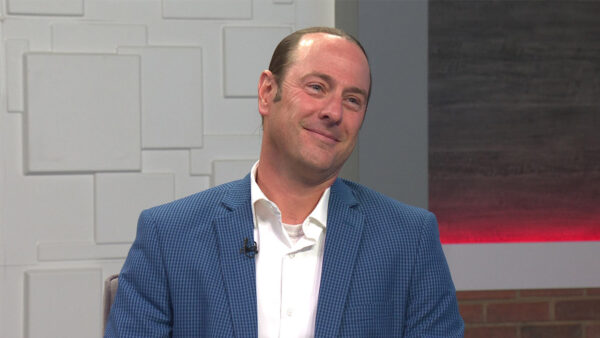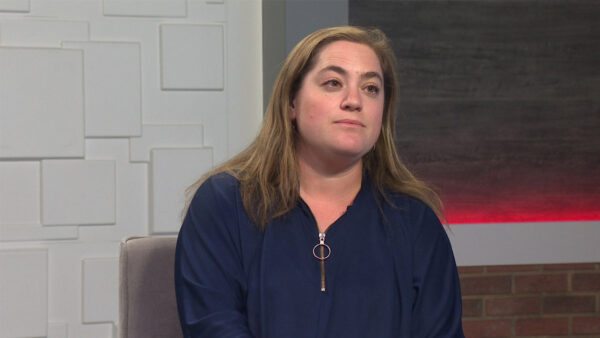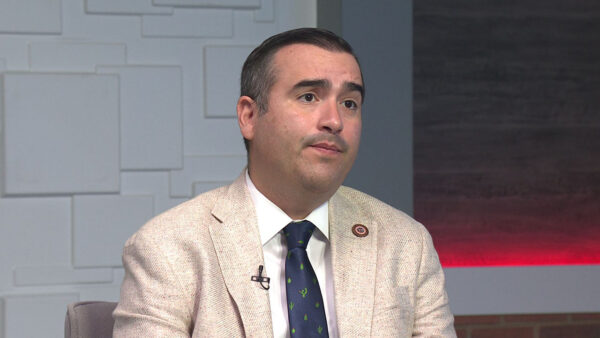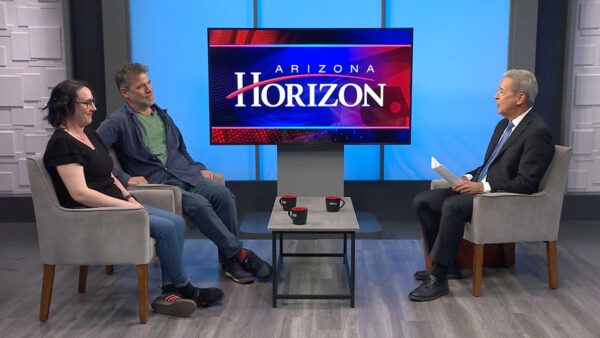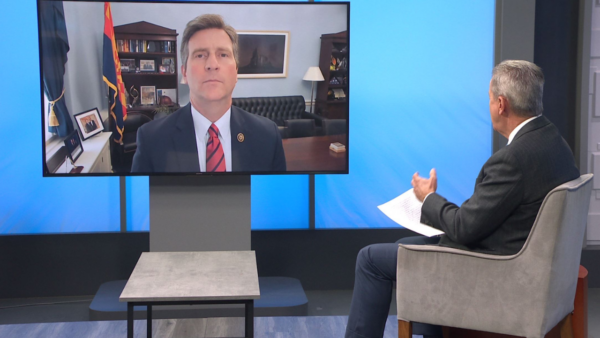Arizona State University quarterback Steven Threet is calling it quits because of multiple concussions. Dr. David Dodick of the Mayo Clinic in Scottsdale is a nationally recognized expert on concussions, and will discuss the injury that is common to athletes in some sports.
Ted Simons: Concussions are becoming an increasing concern for those who participate in football and other high-contact sports. ASU quarterback Steve Tatge recently announced he was leaving the game because of repeated concussion and former NFL star Dave Dorson recent suicide is linked to head injuries suffered many years ago. Here to talk about concussions in sports is Dr. David Dodick, he's a nationally recognized expert. He's also the medical director for the Mayo Clinic's sports concussion program, and he's worked with the NHL to create rules to avoid concussions. Good to see you. Thanks for joining us.
Dr. David Dodick: great to be here.
Ted Simons: It seems like this is a topic that no one ever talked about, and in the past year, everyone is talking about it. What's going on here?
Dr. David Dodick: I think we're becoming more aware of what concussion is. Before we used to think concussion was -- occurred when someone had a severe blow to the head and lost consciousness. Now we realize it can occur with lesser degrees of injury, and we also are becoming more aware of the long-term effects of concussion. And that's why the level of awareness is increased, because when you can suffer persistent long-term neurological damage, it becomes important to pick them up.
Ted Simons; Let's focus and maybe expand. As far as brain samples of some of these athletes who have died, and brain samples have been looked at, what are they find something.
Dr. David Dodick: What neuropathologists are finding, they've turned this into chronic tramatic encephalopathy. It used to be called Dementia pugilistica, boxers would develop this dementia later in life. And it's not to occur -- it's thought to occur in about 20% of boxers. Now we're finding it in other athletes, particularly those athletes who participate in high contact sports, like football, hockey, and the like. So what neuropathologists are finding is these deenginetive changes that occur on the surface of the brain. And it seems to be very distinctive disorder, although it looks like Alzheimer's disease in many respects, it's quite distinctive and different.
Ted Simons: Go back to this 20% of boxers. I would think boxing would be the number one sport for something like this. Only 20%? Is that surprising to you?
Dr. David Dodick: Actually, only 20% were actually diagnosed. The question is, you can have lesser forms of the disorder, and it really -- it's not detected. So I'm sure that the instances probably higher than 20%, but that's the figure that's quoted in the literature.
Ted Simons: What does brain atrophy mean?
Dr. David Dodick: Shrinkage of brain tissue. When neurons in the brain degenerate, there's less volume of brain so the brain atrophies or shrinks.
Ted Simons: And doctors, pathologists are seeing that as well.
Dr. David Dodick: In addition to some of the more -- looking at the neurons themselves and seeing they've actually degenerated.
Ted Simons: How many concussions can cause this CTE, or this atrophy?
Dr. David Dodick: We don't know. That's the million dollar question. It would seem that it's repetitive concussive brain injuries, plus multiple subconcussionive brain injuries. An offensive lineman may have a thousand or more head impacts in the run of a year. Not all of them rise to the level that they cause concussion. So it seems that not only is it repetitive concussions, but these multiple subconcussive injuries where the cumulative effect builds over time. I spoke to a retired NFL players last week, I saw him as a patient, and I said, how many concussions have you had? And he said I stopped counting after 15. So we really don't know how many, and some concussions are more severe. And it's also probably has to do with the individual. I may be more vulnerable and susceptible to the effects of a concussion than let's say you.
Ted Simons: And most athletes, I think a lot of athletes, anyone who plays anything that's high contact has quote unquote seen stars after some kind of physical contact. Is that something that if you've seen stars numerous times it's something to be concerned about?
Dr. David Dodick: Yes. If you see stars or you get your bell rung or you're dinged, that's a concussion. That's a mild mini-concussion. As opposed to someone -- all the way to the other end of the spectrum where you lose consciousness. So there's everything from getting your bell rung where you shake it off and you stay off the sideline for a couple of plays, all the way to losing consciousness. And everything in between.
Ted Simons: I know we're still learn ball game this, but for those who get the bad one, the bad concussion, the knockout, two, three times let's say over the course of a career, or someone who gets their bell rung literally on a daily if not weekly basis over the course of their career, who is more susceptible, do you think?
Dr. David Dodick: Well, probably the athlete who's gotten their bell rung multiple times and has also had a few concussions. But we don't really know if you're -- if you're in a relatively noncontact sport like soccer, you've had two relatively severe concussions but you've got overthem, as opposed to an offensive lineman who over the course much 10 years has had multiple concussive, subconcussive head injuries over time it's probably the latter that is more vulnerable.
Ted Simons: Talk about the symptoms. How long before they can and often do develop?
Dr. David Dodick: About 50% of athletes, I'm speaking mere meanly about football, boxing, and other high-contact sports, 50% of those who developed this disease will complain of symptoms within about five years of retirement. And about a third will actually have symptoms upon retiring. So a good proportion, the majority, will have symptoms either when they retire or within five years. But it may be -- it may take up to 10 or 15 years to develop. The changes that occur in the brain may begin well before the athlete retires. So there was a recent case of an offensive lineman for the University of Pennsylvania, 21 years old, he committed suicide. His brain was already showing changes of chronic traumatic encephalopathy. So the changes may begin early, and then it accumulates and gets more severe.
Ted Simons: And again, as far as the symptoms are concerned, depression obviously, what else?
Dr. David Dodick: There are behavioral, emotional symptoms, personality change, depression, anxiety, sometimes impulse control, aggression. And then typical symptoms of dementia where have you memory loss, poor concentration, you can't remember where you parked your car or even worse. So it actually starts to look like Alzheimer's disease and even sometimes like Parkinson's Disease where people have difficulty walking. So it affects ambulation, speech, and memory.
Ted Simons: This is irreversible stuff.
Dr. David Dodick: And it's progressive. What we think is a cascade of events is set in motion. You might wonder well once the damage is done it's done, why would this continue to progress over time. That is a very important question that we don't have the answer, to but clearly it does progress over time.
Ted Simons: Is there a way for someone to know, obviously the brain sample and the pathology, that's the best way to find out, but there are scanning, are there ways to look at the brain now and say, this could be a problem in future years, this could be a problem right now?
Dr. David Dodick: Well, that is a very intense area of research right now. And so what we're doing, what some folks around the country are doing are looking for signatures of the disease on imaging, when you image the brain. Not just with CT or MRi, but looking for a metabolic or structural signature of this disease so you can tell an athlete at the age of 20, he's had two concussive head injuries, we're seeing markers that you're at risk to develop this disease, it's time to get out of the game. That's what we need to find.
Ted Simons: Is this something that because sports, athletes are bigger, stronger, faster, hit harder, concussions more frequent now than they were in the past, because football has been played for century, and hockey has been played that long at least, and folks have been hitting each other for quite a while. Why are we hearing about this now? Are they hitting each other harder?
Dr. David Dodick: That's part of it. They are bigger, faster, stronger than they were before. And some people say there's a false sense of complacency with the helmets. Back in the days when during gridiron football they used to wear a leather helmet. So people were much more careful of their head. Now they're of there's a false sense of security. They've got this big thick helmet on, now I'm protected. But you can't build a helmet that can protect against concussion. When you have a skull that's moving at 20 miles an hour and it stops, the brain keeps moving. So it doesn't matter what's encasing your head.
Ted Simons: What's the answer? New helmets, new rules? What do you want to see done with this increasing research?
Dr. David Dodick: Well, first of all there has to be an increased awareness and an education. Athletes, parents, coaches, athletic trainers, physicians need to be educated on what concussion is, how to recognize symptoms, and whether to take players out of the game. So that's number one. Number two, there has to be rule changes in the game. This retired football player that I saw last week, he said I couldn't coach this game right now because I always led with my head down. I don't even know how to coach this game anymore. So some rule changes eliminating head hits from the game, eliminating fighting from the game, is so very important. Making the game safer while not ruining the spirit of the game, making the game safer for the athletes and knowing when to pull them out, knowing when to return them and which athlete you shouldn't return, that's the answer.
Ted Simons: I've got to ask you, you want your kid playing football or hockey?
Dr. David Dodick: I knew were you going to ask me that. I played hockey, and I had my son playing hockey when he was younger. I think -- I love sports. I love playing it, I love watching it. As many of us do. So what I have my son play football, as long as I saw some rule changes in the game, and knowing what concussion looks like, knowing when to pull my son out, I wouldn't stop him from playing football.
Ted Simons; All right. Doctor, thanks for joining us.
Dr. David Dodick: thanks very much.
Dr. David Dodick:Mayo Clinic;
